Proposal Power: Mastering Persuasive Funding Pitches
Struggling to create a persuasive funding proposal? This comprehensive guide walks first-time entrepreneurs through the key elements needed to secure startup investment, from understanding your audience to presenting solid financials. Learn insider tips for crafting proposals that get funded.
Iyanna Trimmingham
8/15/20238 min read


Securing funding and investment is crucial for getting any new business or startup off the ground. However, writing an effective proposal that convinces investors or lenders to provide the needed capital can be a major challenge, especially for first-time entrepreneurs.
In this comprehensive guide, we'll walk through the key elements and best practices that new entrepreneurs should follow to craft persuasive, professional proposals that make a convincing case for funding.
KNOW YOUR AUDIENCE
The first step is gaining clarity on the exact audience you're writing the proposal for. Every investor or lender will have their own priorities, criteria, and preferences. Research their typical funding range, industry preferences, projected ROI requirements, and risk tolerance levels. Tailor the proposal to meet their specific needs and concerns. Relevant details to research include:
Type of capital provided - debt, equity, grants, etc.
Typical investment sizes and stages targeted - seed, Series A, etc.
Industry verticals of interest
Average targeted returns
Reputation and prior deals
Understanding your industry is also essential. Be aware of macro trends, competitive landscape, risks, and opportunities to place your business in the bigger picture.
CRAFT A PERSUASIVE EXECUTIVE SUMMARY
The executive summary acts as your proposal's elevator pitch – a concise overview of key points creating a strong first impression. Although it comes first, write it last to encapsulate the essence of your entire proposal. Key elements to include:
Brief company description and mission statement
Founder bios and credentials
Overview of product/service, market opportunity, and target customers
Revenue model and projections
Funding amount requested, intended usage, and projected ROI
This is your opportunity to capture attention and demonstrate why your business is worth investing in. Keep it concise within 1-2 pages while highlighting your competitive edge.
OUTLINE THE MARKET OPPORTUNITY
A common mistake is failing to prove the market need your business addresses. Investors want confidence in the demand for your offering. Make a data-driven case for the scale of the problem you solve and the size of your addressable market, using metrics such as:
Industry growth trends and projections
Total available market (TAM)
Serviceable available market (SAM)
Serviceable obtainable market (SOM)
Customer demographics and psychographics
Competitor market shares
Back up your claims with reliable research sources and identify potential gaps or weaknesses in your argument. Your solution should clearly fill an urgent market need.
DESCRIBE PRODUCTS AND SERVICES
After framing the opportunity, elaborate on your products or services that capitalize on it. Explain key features, functionality, and intellectual property that differentiate your offerings from competitors. Use visual aids like product screenshots or diagrams to showcase your solution. Clearly state your current development status, whether pre-launch, beta testing, or revenue-generating. Share details like minimum viable product plans or prototypes to demonstrate traction. Outline future plans for scaling or introducing additional products.
The goal is to prove your sound go-to-market strategy and compelling offerings compared to customer substitutes.
ANALYZE THE COMPETITION
Investors will assess how you compete against alternatives customers could turn to. Present a comprehensive competitive analysis:
Identify existing competitors and overview their offerings, strengths, and weaknesses.
Evaluate how your solution compares on pricing, features, technology, etc.
Assess competitors' market shares, funding raised, user traction, etc.
Explain how you'll differentiate from competitors and capture market share.
Maintain a balanced perspective and demonstrate your solution's competitiveness while remaining factual about the industry landscape.
MAP OUT YOUR GO-TO-MARKET PLAN
Investors want assurance of a viable customer acquisition strategy. Outline your concrete plans for reaching target customers, covering:
Marketing and sales channels - digital, partnerships, direct sales, etc.
Pricing and distribution model - free trial, subscriptions, channel partnerships, etc.
Sales process - inbound leads, sales team, etc.
Customer support and retention plans
Branding, messaging, and promotional tactics
Include validations like beta customer feedback and pre-orders to enhance credibility. Proposals with traction are more likely to secure funding.
PROFILE YOUR TEAM
Investors invest in both ideas and people. Introduce key team members, highlighting their experience and achievements. Structure brief bios focusing on:
Background summary
Relevant past roles and companies
Skills and expertise
Education credentials
Awards and press recognition
Emphasize experience directly applicable to your startup. Show you have the talent necessary to execute successfully.




FINANCIAL PROJECTIONS
Support your assertions with detailed financial projections, including:
Key cost and expense assumptions
Revenue model and pricing strategy
Projected sales and revenue growth
Gross and net margins over time
Profitability timing and targets
Expected capital requirements and uses
ROI, NPV, and IRR projections
Explain the methodology behind projections and demonstrate a realistic, conservative outlook. Show an understanding of unit economics and the path to profitability.
SUMMARIZE DEAL TERMS
Conclude by clearly stating your funding request, proposed uses, equity offered, and repayment terms. Mention other deal points like board seats, voting rights, and future funding rounds if applicable. Reiterate ROI projections and the market need justifying the capital infusion. Close with a call-to-action and offer to clarify any doubts.
FOLLOWING THIS PLAYBOOK FOR PERSUASIVE PROPOSALS
Writing effective proposals is challenging, but following these key elements will ensure you cover all essential aspects. Tailor your message to your target investors while emphasizing the opportunity size, your team's credentials, your financial understanding, and the uniqueness of your solution. Refine details to build a persuasive case supported by facts.
With preparation and polish, your proposal becomes a sturdy foundation for launching and growing your venture. Use this playbook to guide you in creating a professional document that secures the vital capital needed to turn your vision into reality. Your business's future success starts here.

